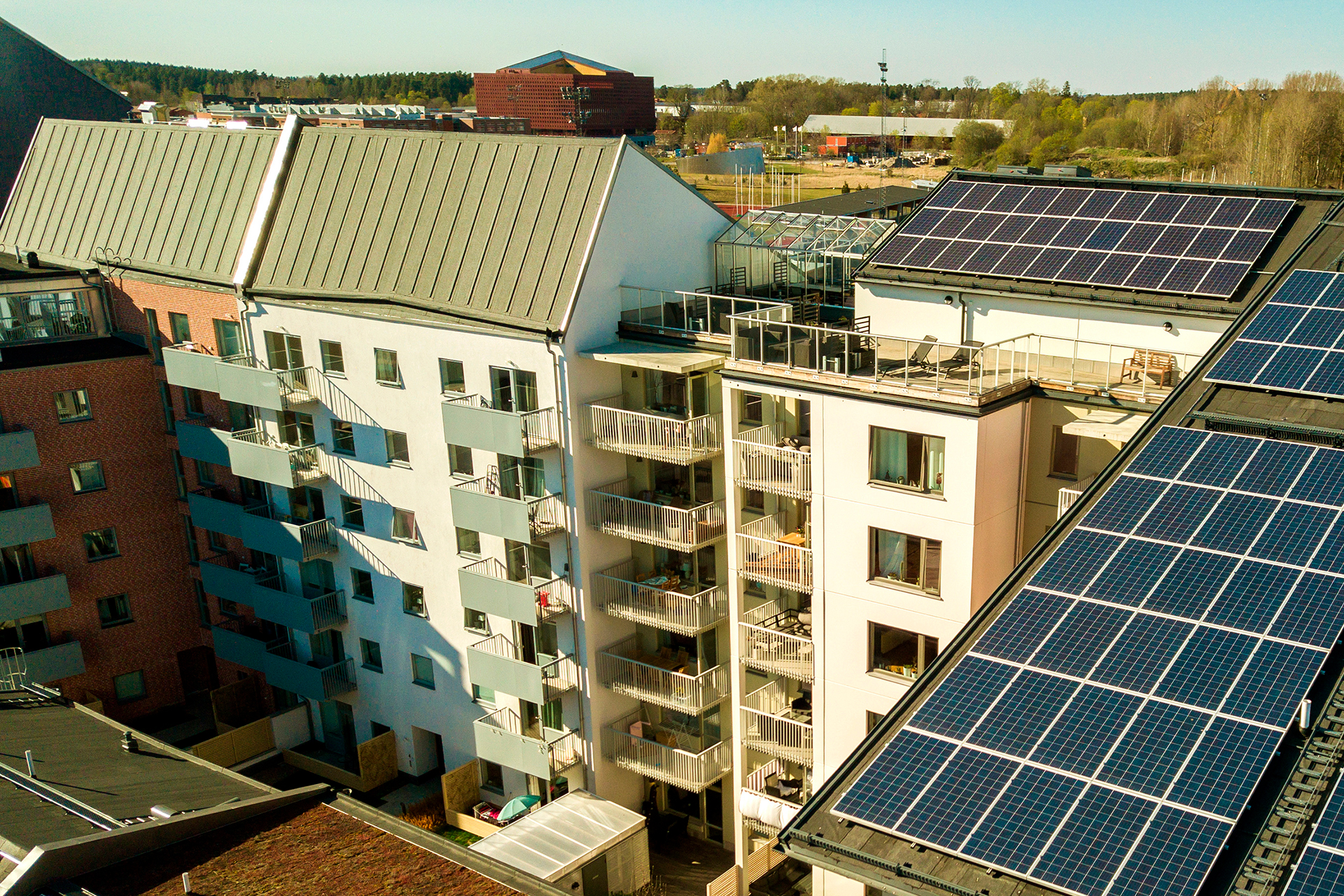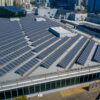(Estimated reading time: 5 minutes) – Audio version of article available.
One of Royal Decree 244/2019’s greatest achievements was allowing residents in a homeowner community to share a self-supply installation (MITECO, 2020), a much-needed leg up to promote the solar sector in Spain, given that most of the population lives in cities and in blocks of flats. This was a much-desired measure, both for consumers, and for manufacturers, installers, and sales agents.
In any event, this type of self-supply is still growing slowly in our country. Experts predict that most will be installed on rooftops because of space issues. If we take the current number of installations in Spain on private rooftops, commercial and industrial buildings, public buildings, etc. as a reference, we can see that we are behind other European countries, despite our vast solar capital. In this vein, Germany has 1.4 million solar rooftops, Italy 0.6 million, and the UK 0.8 million. In Spain, there are only 10,000. However, we have vast potential. The same study providing these data asserts that we could reach 1 million solar rooftops, creating 15,532 jobs, by 2025. It also states that investments may be recovered in just 5.7 years (Observatorio de Sostenibilidad (Sustainability Observatory), 2020).
A homeowner community may self-supply energy in several different ways. They may opt for an installation that is either isolated or connected to the network. In the latter case, they may choose the option with or without surplus (energy produced and not consumed) and decide whether to use the compensation mechanism, by means of which each associate consumer can recover the power produced that they have not used and to which they are entitled, in the form of savings on their bill (IDAE, 2020).
There are many factors at play regarding the type of installation. Clearly, the space available is an absolute determinant. If small, a comprehensive installation to supply all homes will not be possible, but it can cover shared services. In other words, self-supply may be used to light stairways and other common areas, such as landings, front doors, garages, and storage rooms. And why not outdoor areas and swimming pools, too? In this case, the community is the installation’s only user and holds ownership over it.
Another influencing factor when deciding on the type of installation is whether the building has already been constructed or lived in, or if it has yet to be constructed. The agreement that community homeowners reach regarding how much they are willing to pay or the service they wish to obtain is also a determining factor. As such, they may opt for the example above, with self-supply only for common services, or for an installation with more power, capable of supplying the homes. Regarding this latter option, it should be mentioned that not all residents need join the initiative; it is also possible for only the residents who wish to connect to do so, and this does not prevent others from joining later.
In any event, self-supply leads to savings for the community and for homeowners. Today, the market offers many solutions with packages that include both the installation and maintenance and sale, turnkey projects, and even aid with installation at zero cost, in exchange for managing the energy while the investment amortises.
In general, the investment is considered viable in a homeowner community when the installation can provide over 50% of common services or each homeowner’s consumption. The amortisation period for a self-supply installation (of any sort, not necessarily collective) is between six and ten years. Moreover, there are certain tax benefits that help to take the plunge, such as allowances on council property tax from certain town halls.
Almost all sales agents have their own “solar” calculators on their webpages to find out the approximate cost and savings potential for each individual. For example, if a community needs 3.3 kWp power and a 12-panel installation, they would need to invest 7,200 euros plus VAT, and would save 1,600 euros the first year.
Once a decision has been made, the installation can be ready within an average of 2 or 3 days, although this does depend on the size and complexity of the location. In any event, to begin using it, homeowners must wait for the paperwork process to be completed, which may take approximately two months.
Self-supply of any sort is generally beneficial to all of society. The more installations there are, the more possibilities of lowering the price of electricity for other consumers, given that this contributes to making the price cheaper on the daily market. This happens for two reasons: one, because there is less demand, fewer people consuming directly from the network and, two, because the surplus can increase the renewable energy supply, which is cheaper from the start.
Producing our own energy from the sun is a right way to bring more renewables into our electricity system and replace fossil fuels, helping to reduce emissions and fight climate change, as well as to improve air quality and reduce the negative effects of pollution on human health.
This all generates wealth and jobs and helps to increase the growth curve promised by a transition toward green economy.




